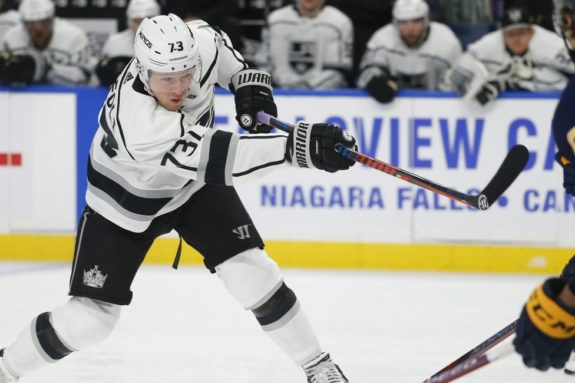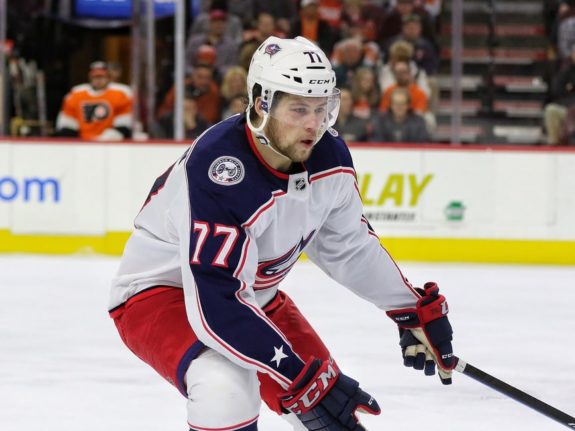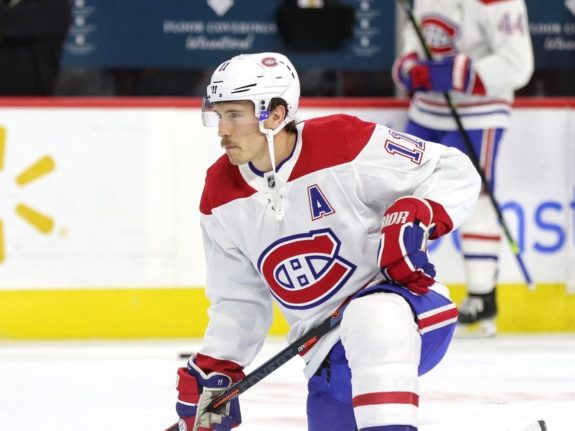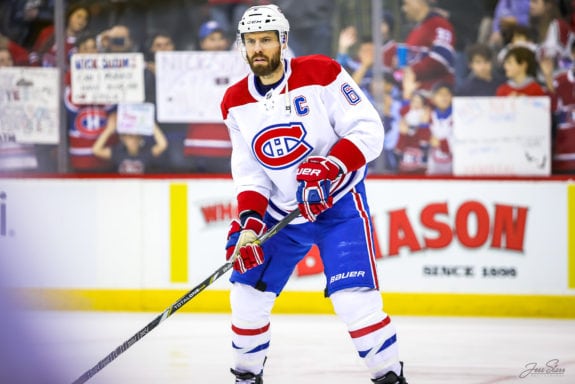The recent addition of forwards Tyler Toffoli (through free agency) and Josh Anderson (via trade) has altered the makeup of the Montreal Canadiens forward group and should have a trickle-down effect on the team’s even-strength play and special teams. However, I want to focus on the power play.
In the last two seasons, the Canadiens have been stellar at five-on-five but have failed to produce consistent results on both the power play and the penalty kill, eliminating their ability to be a definite playoff team. In 2018-19, their power play ranked 30th among the 31 NHL teams, at just below a 13 percent success rate (from ‘Canadiens’ power play has been brutal — even comically bad,’ Montreal Gazette – 01/12/19).
Last season, their power play continued to struggle at 17.7 percent efficiency, or 33 goals scored with the man advantage. However, the new additions to the lineup provide skills that the Canadiens have not possessed in the last couple of seasons and should improve their power play results in 2020-21.

Here are my projections on how Claude Julien and the coaching staff will formulate their power-play units to integrate their new players, Toffoli and Anderson. These additions in coordination with some minor tweaks to positioning and the role of some players could boost production.
Poor Zone Entries and Slow Puck Retrieval
First, let’s look at the problems. The most glaring one is the team’s zone entries. Despite that they are built on speed, the Habs have struggled to effectively use that asset to enter the offensive zone with any sort of pace. In recent seasons, they have adopted what some call the ‘slingshot’ method, where one player, often Jeff Petry, Shea Weber or a forward carries the puck into the center ice area before dropping it to a rushing player at full speed.
The purpose of the ‘slingshot’ is to try catch the opposition defenders flat-footed in the middle of the ice and near the defending blue line, giving the puck carrier time and space to enter the zone untouched, or room enough for a small easy pass to a winger waiting at the blue line. That winger can then enter the zone with possession and look for support options.
For the Canadiens, this has not worked. They haven’t effectively executed passes which has led to offsides and plays that are too slow to develop. Strong opposition has forced them to turn back and regroup, or caused turnovers or dump-ins.

Therein lies the second key issue. When the Habs dumped the puck in, their wingers were caught flat-footed and there was no forechecking pressure. Defending teams cleared the puck out of the zone easily.
This is where Anderson and Toffoli’s added grit will help. Julien should continue to use the ‘slingshot’ method, but when the players are forced to dump the puck in, Anderson and Toffoli’s size and heavy play should allow for stronger puck retrieval. This also why Joel Armia and Jesperi Kotkaniemi should see time on the power play.
Once they’re set up in the offensive zone, the Canadiens could consider a few options.
Power Play Unit One
The Canadiens’ two power-play units are inter-changeable, but one interesting unit would be Petry, Nick Suzuki, Tomas Tatar, Brendan Gallagher and Toffoli playing in a 1-3-1 setup. Tatar seemed to develop chemistry with Suzuki on the man advantage last season and they should be given another opportunity to play together to start the upcoming season.

Gallagher would be the net-front presence when the puck is out high. He knows how to properly time screens and he is very capable of making quick and precise passes. From down low, Gallagher would be a great option to set up Toffoli in the bumper position. Toffoli has a powerful shot, so on this unit, it would make sense for him to be the trigger man from the slot. If he is taken away, Suzuki and Tatar could look for the cross-seam pass. They have had success with this play before.
Petry would remain at the top, near the blue line looking for one-timers. His mobility allows him to walk the line and as the last man back, he can out-skate a mistake if one is made.
Power Play Unit Two
Anderson, Jonathan Drouin, Kotkaniemi, Armia and Weber would make up the second unit. They could also play a 1-3-1 formation with Armia as the bumper option. However, I think a unit like this would be stronger in the umbrella formation, with two players at either side of the net, one player at the top of each circle and one player high at the point in the middle of the ice.
Anderson and Armia are big players, at 6-foot-3 and 6-foot-4, and have a combined weight of about 435 pounds. They would play down low. Armia has slick hands in tight and could be a screen or make jam plays and collect rebounds. Anderson could cause physical havoc for goalies and opposing defencemen.

In any case, this unit should be about funnelling pucks to the net as much as possible. Weber’s shot should be used when available. He still has a cannon. However, on this unit, it could also be used a decoy to allow Kotkaniemi and Drouin to use their shots. Both players are left-handed which some may see as a problem. Drouin should play the left side and Kotkaniemi should play the right in the second one-timer position.
Both Drouin and Kotkaniemi are good playmakers but they should focus on shooting more frequently, and the power play is the place to work on that. The should also be funnelling pucks to the net so Armia and Anderson can get to work.
These new power-play units give some different looks than the ones used in the past. Either way, the Habs need to fix their power play and in 2020-21, they will have the pieces to do it.